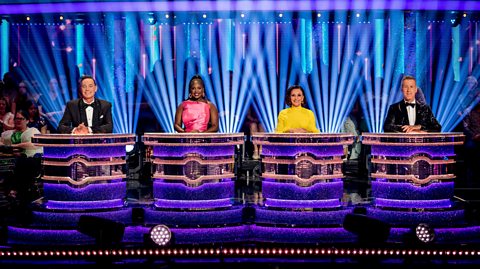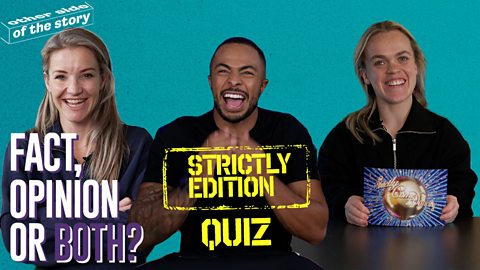Strictly Come Dancing has made many of its fans feel like experts of the ballroom world.
As the judges give their critiques each week on the way to one couple lifting the glitterball trophy, we can expect to hear some of the more technical aspects behind the routines they're watching. That includes words and terms that may be mystifying to some non-experts.
Want to know what some of that dancefloor jargon means? “óĻó“«Ć½ Bitesize is here to help.

In order to demystify things a little, we spoke to Bryan Allen of the British Dance Council, asking him to put some of the terms we may hear Craig, Shirley, Motsi and Anton use in their deliberations into everyday language. As youāll see, some are a bit more straightforward than others.
Turn
How often have we heard the turns in a dance criticised by the panel? An important part of any sequence, they must be an incredibly complicated move to conquer if they come under such scrutiny. Well, perhaps not.

Bryan said: āThis is clear. It means a turn to the right or the left, either a solo turn or with a partner.ā
So itās exactly what it means away from the dancefloor then. A turn is simply a change of direction - but doing it with the appropriate style and precision is what counts.
Pivot
This is another move the Strictly contestants have to master if they want a decent shot at the glitterball trophy.
Bryan explained this is where āthe dancer stands on a back step and turns the action, going on to a forward stepā.
If a dance includes continuous turning actions, these are referred to as pivots and spins.
Poise
The Strictly judges arenāt just looking at what happens with the contestantsā feet. Itās the way they carry their entire bodies, as Bryan told us: āPoise is the way in which the body is held or positioned to reflect the dance style being shown. It is also related to the posture.ā
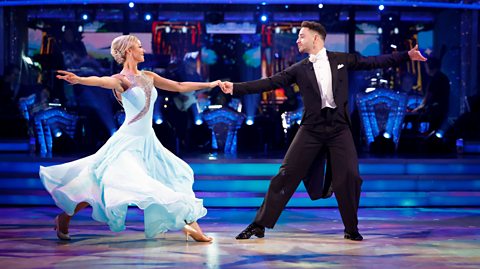
So the next time you hear a couple being praised by Craig Revel Horwood for their perfect poise during a waltz, itās a compliment to the graceful way they held their entire frame as they glided across the floor.
Syncopation
This is all about the music and how a coupleās steps keep up with them.
āItās where the beats of the music are divided,ā said Bryan, āfor example, in Waltz music with three equal beats for each. Some figures have more than three weight changes. In the Jive and Cha Cha, one of the beats is split into two halves. There may be more than one beat split that way.ā
Itās up to the couple to react to the syncopated beat with flair and impress the judges - and we all know how closely theyāll be watching.
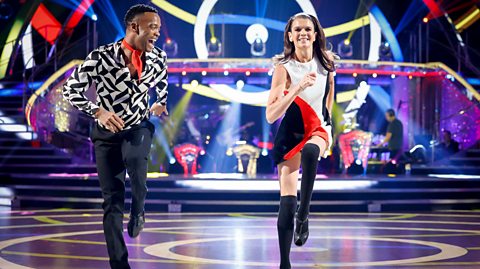
Transition
Think about a typical dance on Strictly. It isnāt just the same steps for the duration of the song, the choreography is peppered with āmomentsā (for example, John Sergeantās memorable dragging along the floor of partner Kristina Rihanoff in 2008). When you have a series of these moments in a dance, you have to get from one to the other as seamlessly as possible.
Itās called a transition, explained by Bryan as: āChanging from one movement or style to another.ā
Some make their transitions more clumsily than others which means a mark or two off their final score.
So next time you see Shirley Ballas getting nit-picky over somebodyās poise during a transition which involves a pivot, you should have a clearer idea of what sheās talking about. Keeeeeeeeeeeeep watching!
Viewers can follow the latest series of Strictly on “óĻó“«Ć½ One and “óĻó“«Ć½ iPlayer.
This article was first published in September 2019 and updated in November 2023.
When the Waltz was controversial and the GIs brought the Jive
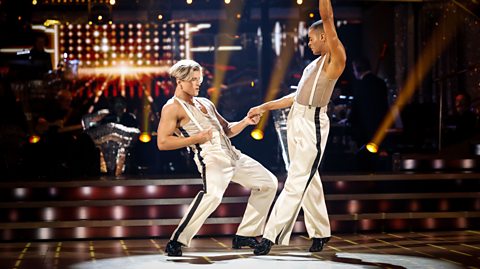
Strictly Come Dancing: Can you identify a dance from its description?
Can you tell a samba from a rumba by words only?
